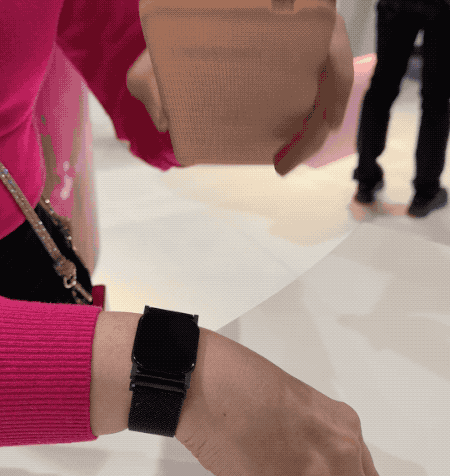MWC 2024: Motorola’s Rollable Concept phone laughs at your silly foldable
[Cartoonishly exaggerated Crocodile Dundee accent] That’s not a foldable. This is a foldable. More specifically, it’s a foldable concept device from Lenovo/Motorola showcased on the floor at this year’s MWC. The company walked us through a demo of a device that’s another terrific example of its ability to get weird with design.
The Rollable Concept Phone (as Lenovo is currently calling it, in lieu of giving it an actual marketing-approved name at this stage) isn’t drawing quite the same crowd as the transparent laptop we told you about yesterday, but it’s a prime example of what concept devices can and should be.
And “concept” really is the key word in all of this. It
- Highlights that there’s absolutely zero guarantee the device will ever become a product and
- Points to why the company is being a bit stingy with demos. There’s no guarantee that a device at this stage will be able to stand up to four days of constant demos, so Lenovo is safeguarding those it does have on hand.

Image Credits:
Prior to the arrival of Samsung’s first Galaxy Fold, when I pictured a foldable phone, it usually looked something like this – that is to say, bendable at a lot more than just a single hinged point. Now rollable displays are certainly not new as a concept, and there are likely some very practical issues that are currently stopping companies from manufacturing them at any meaningful scale.
I keep thinking back to the earliest days of the Galaxy Fold and how all sorts of screen issues popped up, causing Samsung to go back to the drawing board. The truth of it all is you can build robots to perform thousands of folds prior to launch, but there’s a limit to understanding how a product will behave in the real world until it’s actually out there.

Image Credits: Brian Heater
Yesterday, someone asked me if I think Lenovo will ever actually put the device into production. I can’t tell you one way or another. I can only say that this thing will have to be put through some very rigorous testing first if it does. I suppose there’s a sense in which demoing it for several hours a day here at MWC is an important step in the process.
Shows like this are also used to gauge public interest. With new form factors like this, there are always the open questions of whether this is something people actually want in their life and if it will ever rise to a level beyond simple novelty. I can certainly see interest, assuming the company can deliver it at or below the foldable price point (manufacturing prices come down with scale, and I suspect it currently costs a lot to produce).

Image Credits: Brian Heater
The rollable design is absolutely more versatile than that of a foldable, though the lack of a crease means you can’t just snap it shut and stick it in your pocket. What you can do, however, is turn it into a giant makeshift smartwatch. It’s a bit like a giant, high tech slap bracelet, thought this one requires the wearer to have a magnetic band on their wrist to keep it in place.
We don’t know much more about the device than we can see with our eyes. It’s got a fabric backing, which is far more flexible than traditional phone backs – though one wonders whether you’re going to be constantly hand washing the thing. The operating system adapts to the device’s orientation, prioritizing the part of the screen you’re most likely to utilize. We also know it can handle a two-person game of Connect 4.

Image Credits: Brian Heater
Lenovo says rollable has multiple batteries – though it won’t disclose how many. In much the same way that foldables have two separate battery segments, the rigid pieces need to be distributed throughout to allow for flexibility — at least until we get equally flexible batteries, that is.
One thing I will say in favor of productization is that Lenovo seems more likely than anyone else to put something like this out into the world. Compared to the competition, the Chinese company is fearless when it comes to getting weird with product design – something I’m fully in favor of. Whether that translates to actual product sales is a different question entirely.

Image Credits: Brian Heater
People certainly had their doubts about the first foldables. While the category only represents a small fraction of the overall smartphone market, I would consider it a success. As ever, the question of whether Apple will give it a go continues to loom over the subject.
Assuming the design doesn’t present any limitations with regards to daily use, I would happily take one of these things for a spin, if only for the weird looks I get on the subway (though New Yorkers remain unflappable). I still have a lot of questions, of course. How robust is it? Will it still work after you drop it on the ground? And what would a case look like? It would have to be equally flexible while at least protecting the corners. It feels a bit like that question about how a dog would wear pants.
But it’s neat, novel, weird and I’m into it.


